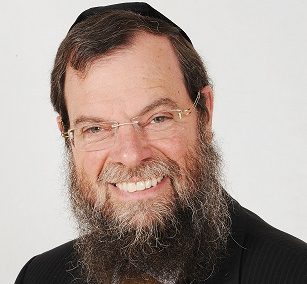click to dowload our latest edition
CLICK HERE TO SUBSCRIBE TO OUR NEWSLETTER


Published
3 years agoon
Light has always been used as a metaphor for revelation. In Kabbalah, the Jewish mystics referred to the highest expression of divinity as “infinite light”. And, of course, when revelation strikes, we “see the light”.
But what drives people to be so obsessed with light?
Plainly, I am thinking about Chanukah, the Festival of Lights. For generations, Chanukah was observed at home and the menorah (chanukiah) would also be kindled in shuls before the evening service. But, in our times, public menorah lighting ceremonies are so widespread, they have become part of the Jewish landscape.
It all started back in Chanukah 1974, when Rabbi Abraham Shemtov, a leading Chabad shaliach, kindled a menorah outside Independence Hall in Philadelphia near the Liberty Bell. The following year, an old friend of mine, Rabbi Chaim Drizin, erected the first giant menorah in San Francisco.
When they tried to do a public menorah lighting in Burlington, Vermont, it was met by protests. The then mayor came to its defence. His name? Bernie Sanders! The world’s largest menorah was designed by renowned artist Yaacov Agam in 1977, and is located, appropriately, in New York City. It goes up on Fifth Avenue at Central Park, and is certified by the Guinness World Records. It was inspired by a hand drawing by the Rambam (Maimonides) of the original menorah in the Holy Temple of Jerusalem.
For Israel’s chief rabbis to kindle a giant menorah at the Kotel doesn’t raise any eyebrows, but it’s heart-warming to see a huge menorah outside the White House in Washington or at the Eiffel Tower in Paris. And isn’t it awe-inspiring to see that they’ve been lighting up Red Square at the Kremlin in Moscow since 1991, a year before the fall of the Soviet Union, and now also at the Brandenburg Gate in Berlin, a former symbol of Nazi power and tyranny?
I was privileged to organise the first giant menorah in Johannesburg at the Killarney Mall way back in 1979 when I was the director of Chabad House here. It was such a novelty then that there were, literally, thousands of Jews at the nightly ceremonies.
Which Jew in the world hasn’t seen or experienced these iconic public menorahs? Indeed, they have helped to publicise the miracle of Chanukah, and have encouraged countless Jews to observe it themselves with their families.
But it wasn’t always that simple. In fact, it would take the United States Supreme Court itself to give the legal stamp of approval for the City of Pittsburgh to erect a giant menorah outside City Hall on 3 July 1989. And even after that, a series of court cases up until 2002 were necessary finally to put to bed the arguments of the ACLU (American Civil Liberties Union) that contended it was a violation of the separation of church and state principle enshrined in the American Constitution. (Why the ACLU never argued that against the thousands of festival trees and nativity scenes in public areas is a moot question.)
My question is this: the Lubavitcher Rebbe was famous for always being positive and non-confrontational. Why would he instruct his people to fight the case and indeed to take it to the highest court in the land?
It may be because the Rebbe was infatuated with light. He believed more than anyone in the power of light to stamp out darkness. Others concentrate their efforts on fighting darkness, while the Rebbe taught us to spread light.
Can you imagine a Chabadnik throwing rocks at people driving their cars on Shabbos, as so sadly happens in Jerusalem? Impossible! The Rebbe would have been horrified. We must teach, encourage, invite, share, and inspire, not threaten people here or in the hereafter.
His way was always to spread light. To share the beauty of our faith rather than the consequences of disregarding it. “A little light dispels a lot of darkness” became one of the most quoted lines in the movement, almost a mantra.
But, in fact, it goes all the way back to the Talmud itself, which states that the Chanukah menorah should ideally be kindled “at the outside doorway of one’s home”. If we cannot manage that (can you just imagine us trying that in South Africa today?) then a windowsill which is visible to the outside may be used. The guiding principle here is pirsumei nisa, (to publicise the miracle) of Chanukah as widely as possible. That is also one of the main reasons we light the menorah in shul.
Clearly, the purpose of the Chanukah lights isn’t only to light up our own homes, but to illuminate the night, to remove the darkness from the streets.
Yes, there is something audacious about taking the Chanukah lights out into the streets and into the most public square. But the Rebbe believed in the power of light. He was absolutely determined and focused on changing the world by disseminating light. He was single-minded about sharing and spreading the light of Torah and Judaism in every corner of the world.
Are you embarrassed? Do you question why we should be flaunting our faith in public? Then, I quote my deeply lamented senior colleague, Rabbi Lord Jonathan Sacks, obm, who said, “Non-Jews respect Jews who respect Judaism, and they are embarrassed by Jews who are embarrassed by Judaism.” Be proud of who you are, and others will be proud of you too.
Why the Rebbe’s obsession with light? Perhaps to banish darkness once and for all and usher in a new dawn, a new light, the light of redemption.
